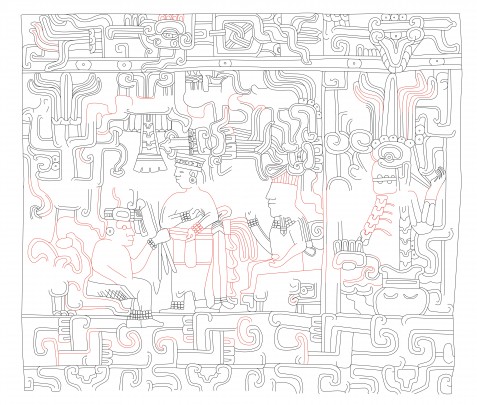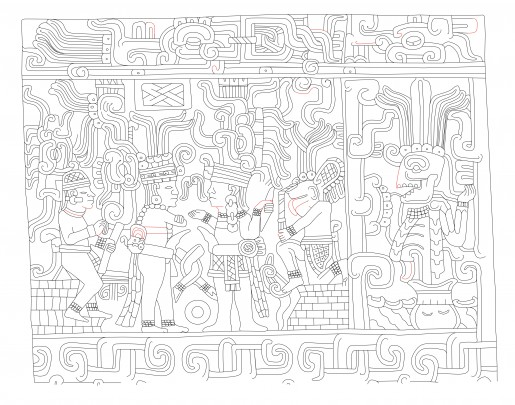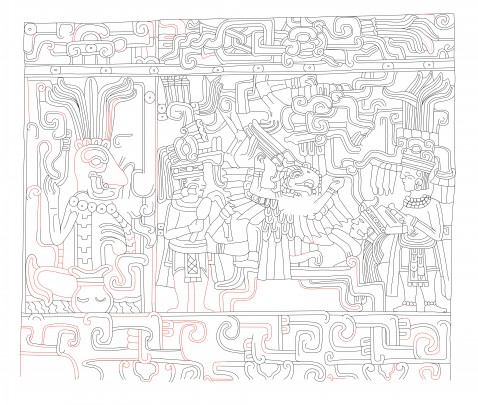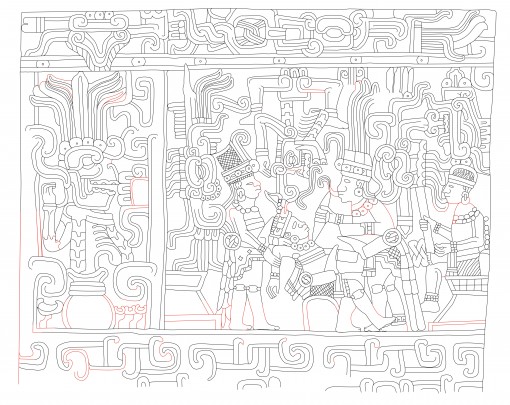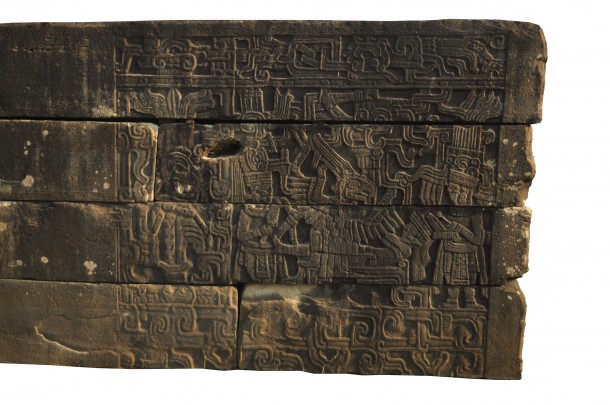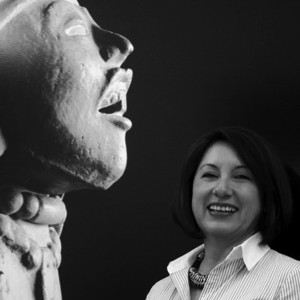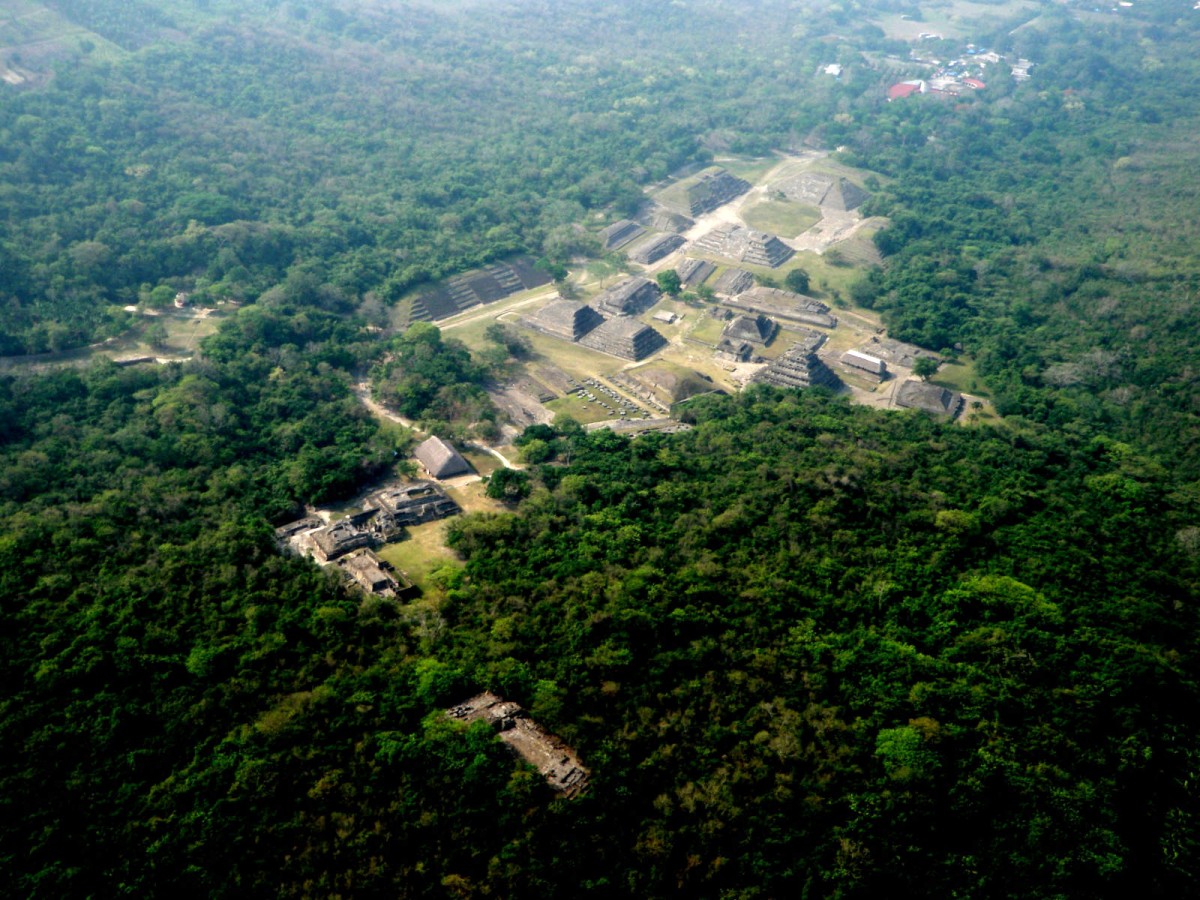El Tajín is very well known for four buildings and a sculpture: the Edificio de los Nichos ("Pyramid of the Niches"), the South Ballcourt, the Xicalcoliuhqui or stepped-fret motif, and the Edificio de las Columnas ("Building of Columns"), as well as for the god Tajín (representing thunder), located at the center of Building 5. All of these iconic constructions face toward the Cerro del Oriente (“Hill of the East”), also called the Cerro de los Mantenimientos (“Hill of Sustenance”) by specialists, in allusion to the ancient world view of the hill as a sacred site, a divine being that contained the primordial waters, a place of magical force and supernatural powers. This message was also applicable to these aforesaid emblematic buildings, with the divine hill as their backdrop or frame, so that they have an implicitly sacred language full of symbolic meaning.
A total of 21 ball-courts were built in El Tajín, 13 of which are located within the area of monuments. The game seems to have been played as a ritual exercise to ask the gods to preserve harmony with nature and prevent severe meteorological phenomena.
Their main deities were Quetzalcoatl / Tlaloc as a duality, each one under the auspices of Venus as the morning or evening star, due to this planet’s connection to changes in the weather. The name Tajín itself was imposed by the Totonacs when they reached the region in the thirteenth century, and it means “thunder” or “powerful smoke,” attributed to the “Hurricane God.” With its location on the Gulf Coast, a region often buffeted by strong trade winds known as northers, it was known as the city of the Hurricane God. Documents show that between 850 and 1150 AD the earth underwent a period of climate change that researchers in Europe have called the Medieval Warm Period. Droughts were recorded in some places in central Mexico, and in the basin of the Gulf of Mexico, the region where El Tajín is located, there was intense rainfall, atypical hurricanes, and the rivers swelled up to four meters higher than their normal levels. The plazas in the city of El Tajín were flooded by water up to two-and-a-half meters deep. From this period we have references to Thirteen Rabbit, a central figure who acted as a social agent to transform the city and to line the buildings with niches as a symbol of Quetzalcoatl as the god of wind and movement.
El Tajín is a city in which the buildings are connected to astronomy, understood as the observation of the trajectory of the Sun and the Moon through the sky, as well as certain stars and planets such as Venus. These observations were linked to nature and climatic phenomena, such as the rainy and dry seasons, and in turn were connected with crop cycles. During the period known as “year-quarters,” which mark the Earth’s movement around the sun, these “quarters” take place in the months of March, June, September and December, and some coincide with changes of season. In the Pyramid of the Niches, a solar phenomenon takes place that it has only been possible to record in the quarter corresponding to the days falling between 17 and 25 of March. Therefore, as in ancient times, we can marvel at how the sun appears precisely from behind one end of the Cerro de los Mantenimientos and, on reaching the center of the hill, shines light onto every part of the Pirámide de los Nichos. What is impressive is that the rest of the site remains covered in darkness, and the light is only reflected for one minute on each section of the building before descending to earth, at the moment when it touches the central altar of the Pyramid of the Niches. This phenomenon lasts seven minutes and afterwards the entire site is lit up.
Why does this happen in El Tajín? Because of the nearby hill. And because the place chosen for the city’s construction is connected to its world view, hence El Tajín is considered a sacred and symbolic city, a quality not necessarily shared by all cities in ancient Mexico.
This is truly remarkable because more than 1,100 years ago sacred spaces were already being planned, with temples and buildings erected using lightweight concrete (an early type of cement), and because today we know that inhabitants came from many places, such as the Maya region, to gather in these sacred places. In those periods palaces were built using all the features of the corbel-arch construction method. If we are correct in our thinking, this means that pilgrims would have traveled from various parts to visit the sacred and symbolic city of El Tajín, crossing rivers and the sea, and coming by foot along roads, all in order to petition the gods for balance in the universe, and for the sudden climatic changes to cease so that harmony might return to their lands and their crops, in order to ensure mankind’s continued survival.
This explains why El Tajín is key: it reminds us of the importance of protecting and preserving our environment, and of the awareness we require as humans living on this planet. We must visit the site with the greatest respect, in the understanding that it was a sacred city for many years; we must protect and preserve it as the place where the gods communicated with humanity.

